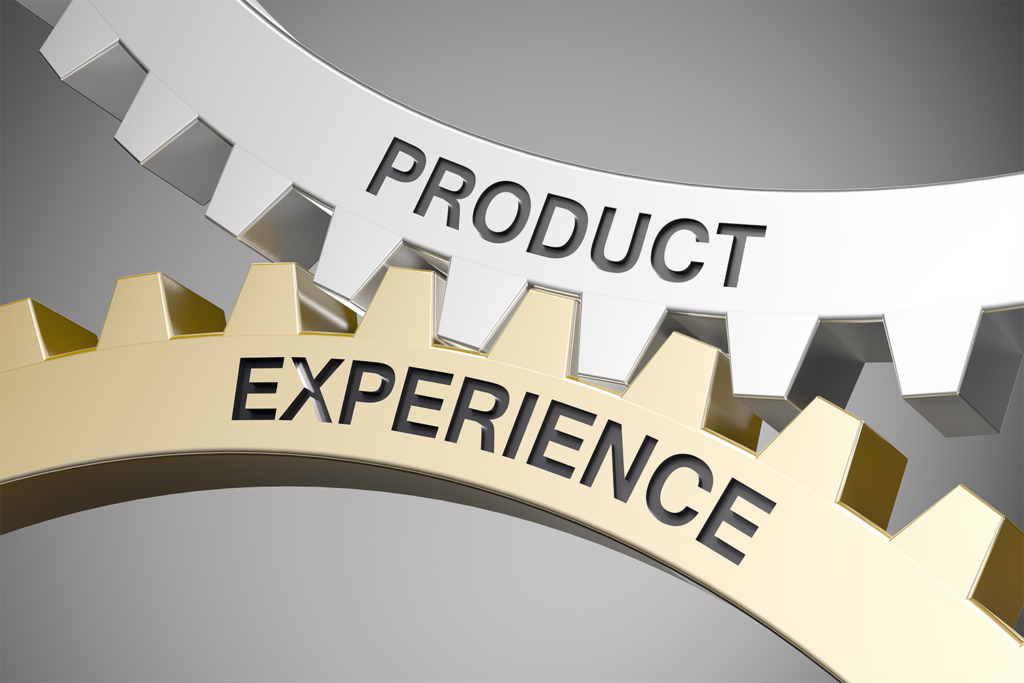While it’s easy for a company to only focus on getting the sale, a reputable company provides support after the fact for a positive product experience. Building a positive product experience is a key component to building a reputable and successful brand.
Here’s what you need to know about building the right experience for your brand.
What Is Product Experience?
Product experience is the part of the overall user experience that deals with the actual product itself. This includes anything from their thoughts to their emotions and motives.
Depending on the type of company, product experience can look very different. This is especially true for software companies that offer online tools rather than physical products.
Why Does Product Experience Matter?
Companies have so much to worry about already, so why should they care about product experience? Well, your product should act as the basis of your entire company. So if users aren’t having a positive experience with your product, you probably won’t have a very successful company.
Users will stop using your product, won’t make repeat purchases, won’t recommend your products to others, and may even leave negative reviews due to a poor product experience.
Obviously, these aren’t ideal scenarios. The good news is that you can use the right approach to build the right product experience for your brand.
What Are the 4 Different Elements Involved in Product Experience?
There are four different elements involved in product experience that you need to know about:
- Feedback
- Analytics
- Prioritization
- Engagement
Let’s explore each of these elements in greater detail so that you can effectively build the right product experience for your brand:
1. Feedback
The first element within product experience is feedback. To know what customers are looking for in your product, you first need to ask them. The best way to do this is to conduct surveys, interviews, site visits, etc. While formal feedback is great, you can also talk to your internal customer-facing teams for more intimate and anecdotal insight that can be just as valuable.
Once you have gathered feedback — the real work begins in terms of figuring out what to do with it. Make sure that you’re not too reactive but also not too passive with the information you learn from surveys and interviews.
Also, make sure that you’re consistently gathering feedback on a regular basis.
2. Analytics
The second element within product experience is analytics. Analytics helps you make the best possible decisions for your products and overall business based on real data. Analytics takes out a lot of the guesswork and allows you to make informed and meaningful decisions that will positively impact your company.
Here are some different types of analyses that you may want to utilize:
- Retention analysis: How well does your product retain users over time?
- Path analysis: How do users actually utilize your product?
- Funnel analysis: Where do users have trouble with using your product?
- Adoption analysis: What product features are driving revenue and how can you better take advantage of these features?
3. Prioritization
The third element within product experience is prioritization. In an ideal world, your company would have unlimited resources that allow it to build the ideal quantities of the right products at the right times. In reality, however, this is impossible, thanks to limited time and resources. This is where prioritization comes into play.
Based on what you learn from feedback and analytics, you can then determine what areas to prioritize. Just make sure that these areas are in line with the overall goals and KPIs that you’re trying to meet as a company.
4. Engagement
The fourth and final element within product experience is engagement. Engagement is required to ensure that customers keep loving and using your products.
You can begin your engagement strategy by implementing onboarding procedures. From there, keep customers up-to-date about your product’s newest features and capabilities.
Finally, re-engage inactive users by promoting new benefits, success stories, functionalities, etc.
How to Build the Right Product Experience for Your Brand
Now that you know the basics surrounding product experiences, it’s time to discuss the concrete steps you need to take to build the right product experience for your business.
1. Educate Your Users
For users to have a positive experience with your product, they need to know how to use it. Never assume that your products are intuitive and that users will be able to figure it out on their own.
As a result, your company should prioritize education in the form of videos, blog posts, interviews, manuals, etc. Additionally, you should have a customer service team that’s available to help them with any issues that they run into along the way.
2. Train Your Team
Speaking of your team, you need to provide them with adequate training to ensure that they’re able to provide the level of support necessary. However, training should extend beyond your customer service team to your entire company.
This is because every department should play a role within product experience. Everyone from marketing to product development should be well-versed in the ins and outs of your product.
3. Nail Down Your Process
To end up with the best products that contribute to a positive product experience, you need to nail down your development process from start to finish. This can be a lengthy and drawn-out process, which is why it’s necessary to have some forms of clarity and guidance along the way.
Here are some different stages of product innovation and development that you may want to implement:
- Ideation — coming up with ideas for new products
- Validation — validating that a need exists for the products
- Planning — planning the logistics required for building the products
- Active development — actually building the products
- Testing — getting feedback from users about the product before launch
- Launch — launching the product to your market
- Analysis — gathering feedback and information regarding the success of the product launch
4. Incorporate Smart Tools
It would be impossible to handle things like feedback and analytics on your own without the help of tools. Thankfully, countless tools can help you build the right product experience. For instance, there are customer survey tools out there that can help you quickly and easily gather customer feedback. You can do this via email or SMS to make things simple.
There are also tools to help you manage your analytics. These tools are invaluable when it comes to product experience as they provide you with a whole host of information you wouldn’t have access to otherwise.
Just make sure that the tools you use are providing accurate, useful, and up-to-date information that you can use to your advantage.
5. Keep on Working
Finally, you need to keep on working. Product development and experiences don’t have an end date. As a result, you need to consistently gather, track, and monitor the use of your products and come up with new features and solutions on a regular basis.
The Final Rundown on Product Experiences
Product development, innovation, and experience aren’t easy. However, these things can be made a bit easier with the help of seasoned experts like Greg Gillman. Reach out today for tailored advice or check out our resources for more general guidance on how to build a successful and reputable brand.
Sources:
Product Experience Strategy | Small Business Chron
5 Cool Things You Can Do With Customer Feedback | Entrepreneur
Don’t Market to Your Customers; Educate Them Instead | Forbes


